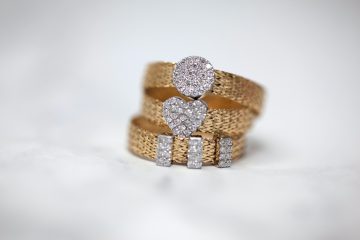Diamonds are extremely sought-after due to their rare nature. But diamonds can actually differ a lot in quality and price. So what should you think about when buying diamonds?
Begin with the 4 C:s which is used for grading diamond quality.
- COLOR = color
- CLARITY = Clarity
- CUT = Grinding
- CARAT = Weight
There are several important factors to consider, order your diamond ring from a knowledgeable and responsible professional who, moreover, does not carelessly spend money on it.
The color is judged against a calibrated white paper;
- TOP WESSELTON
- WESSELTON
- TOP CRYSTAL
- CRYSTAL
- TOP CAPE
- CAPE
- LIGHT YELLOW
- YELLOW
- F to G
- hrs
- IN
- J
- K to L
- M to N
- O to R
- S to Z
CLARITY / Inclusions describes how many, or how large, natural inclusions are in the diamond. This is assessed by means of a magnifying glass 10 times magnification and assessing the clarity and inclusions of the diamond.
- No inclusions, very durable
- Very small inclusions, very durable
- Very small inclusions, durable, can be OK in larger stones
- Small inclusions, avoid
- Avoid clear inclusions (visible to the naked eye)
Grinding is the factor that affects the appearance of diamonds the most. Grinding grades are called:
- VERY GOOD
- GOOD
- Moderate
- BAD
The outer edge of the diamond is important. It should be smooth and polished as it gives a more durable stone.
The diamond is very hard, but at the same time, any surface damage or internal stress can cause it to be more brittle.
- The normal color of the jewelry diamond is a pale yellow to yellow/brown.
- The diamond can be heat treated and available in different colors.
- Diamonds can be manipulated by removing a defect and replacing it with other material.
- A diamond normally tolerates quite high heat before it absorbs oxygen into the air and turns gray.
- A heat-treated diamond loses luster. and its purity or grinding cannot outweigh the lost luster in the stone.
- Heat-treated diamonds are made from inferior materials, and usually have significantly more inclusions, resulting in a weaker stone.
- A manipulated diamond can completely lose its former appearance when heated as the injected synthetic material is corrupted by the heat. Therefore, it is difficult for a non-skilled person to buy large and expensive diamonds.



